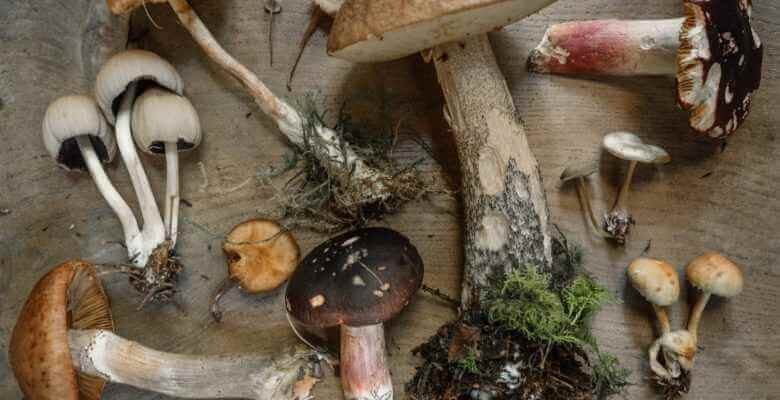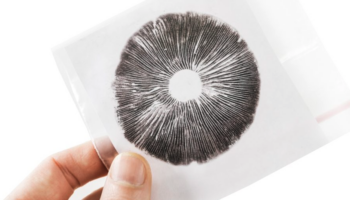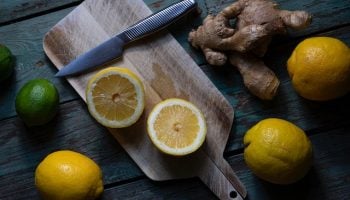Magic mushrooms and psilocybin – the two are pretty closely linked. Psilocybin is the main psychoactive ingredient in magic mushrooms. It’s the thing that makes you trip. Magic mushrooms without psilocybin would be like alcohol-free vodka (pretty pointless).
That doesn’t mean they’re one and the same, however. Swallowing a tablet of pure psilocybin is going to be a slightly different experience to eating a couple of fresh shrooms.
In much the same way that it’s good to know the difference between smoking DMT and drinking ayahuasca, it’s important to understand the differences between psilocybin and magic mushrooms.
The Contents of Magic Mushrooms
Psilocybin isn’t the only thing in magic mushrooms that’s important. Psilocin is also present – this is what psilocybin is broken down to in the body, and is basically the substance that ends up causing all the psychedelic effects. Psilocin is less stable than psilocybin, and is also present in smaller amounts in shrooms.
Magic mushrooms also contain baeocystin, an analogue of psilocybin which could also have its own psychedelic effects. However, baeocystin is present in even smaller amounts than the other psychedelic components; so it’s the quantity of psilocybin and psilocin in magic mushrooms which is really the best measure of their psychoactive potential.
Taking a dose of magic mushrooms is therefore not as simple as taking a dose of psilocybin. You’re eating a natural combination of psilocybin and some of its pals. It’s quite possible that the psychedelic effects of baeocystin and extra psilocin could contribute to your experience.
The Science of Psilocybin
Why would anyone take psilocybin on its own?
The famous Johns Hopkins studies on magic mushrooms have actually been using oral doses of pure psilocybin, rather than getting their participants to drink a ‘shroom shake’.
It’s slightly more accurate that way, we’d expect…
In these studies, the psychological effects of 30mg of oral psilocybin appear consistent with a high dose of magic mushrooms, which would be something in the range of 5g of dried Psilocybe cubensis mushrooms.
These studies use psilocybin because it’s more accurate. When you eat a bunch of magic mushrooms, you’re ingesting unknown quantities of psilocybin, psilocin and baeocystin, all mixed together. This makes it a lot harder to estimate how much you need to take…
How Much is Enough?
The question “How many mushrooms do I need to take?” is very common. Unfortunately, like many things in nature, magic mushrooms don’t typically go for scientific accuracy – and the quantity of psilocybin in mushrooms can vary from species to species, and even from batch to batch.
Fresh mushrooms, depending on the species, can contain between 0.03 and 1.2 mg/g psilocybin, and can also vary dramatically in the ratio of psilocybin:psilocin:baeocystin. It’s good to find a species of which there is information about the psilocybin content. Here’s a list of some species and their psilocybin content.
Let’s look at one of the most popular species; Psilocybe cubensis. This mushroom, when dried, contains roughly 6mg/g psilocybin, and about 0.5mg/g psilocin. Typically, 5g of dried Psilocybe cubensis mushrooms will be a high dose, so 1-2g should be a good starting point for most people.
If you’re eating fresh mushrooms, you’ll need to multiply everything by ten, since fresh psilocybin mushrooms are usually around 90% water. So the equivalent 30mg of psilocybin in fresh Psilocybe cubensismushrooms would require you to eat around 50g of fresh mushrooms – compared to around 5g of dried mushrooms.
It’s also important to note that even within the same species, there may be a considerable difference in psilocybin content between two different batches of mushrooms. This is why we recommend combining your batches to create an even dose.
Read our comprehensive guide on microdosing magic mushrooms.
If you’re interested in microdosing with psilocybin, check out our Microdosing Course. We’ll guide you through the basics—then dive much deeper, helping you tailor your routine to meet your personal goals.








This kind of awareness is very good and would benefit a lot of people in the long run.
I hope that this will progress and improve people’s lives. Thank you for sharing!
Thanks for the great article. Also, please consider that the serotonin-2a receptor is a G-coupled protein receptor, which means that the multiple active ingredients in magic mushrooms work synergistically in a manner analogous to the “Entourage Effect” that has recently been elucidated for cannabis. Here are a few links that have more information:
https://psychedelicreview.com/the-entourage-effect-in-magic-mushrooms/
https://psilocybintechnology.com/magic-mushrooms-vs-cannabis-entourage-effect/
Thanks again for writing about this topic!
Hi Andrew,
Thanks for sharing that information! Perhaps we’ll look into this topic for another article.
Thank you for sharing and spreading awareness! Mushrooms are really indeed a magical fungus. As studies progress, it unfolds a lot of possible uses and applications in science and medicine. I hope this could be the future treatment of a lot of diseases. It has endless capabilities!
I cannot wait to see what mushrooms can offer in the future of medicine. I hope that this magical plant would not be abused and misused. Everything, if used properly and moderately proves to be beneficial.